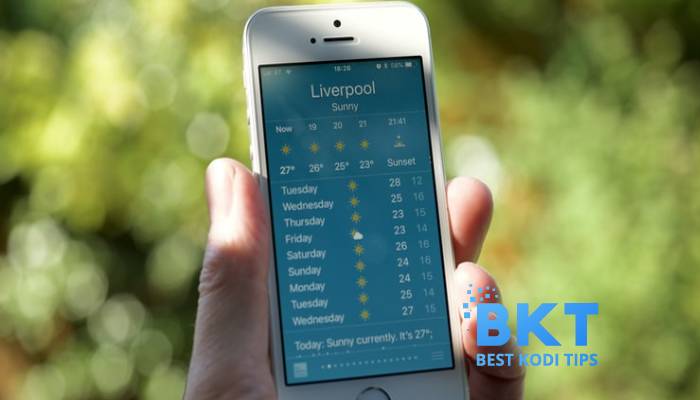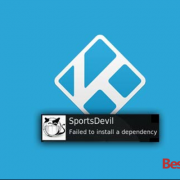The advent of modern technology has revolutionized weather forecasting. From distributed radar systems and geostationary satellites to AI-driven computer models – new-age meteorologists use a wide array of tech innovations to generate accurate and timely weather forecasts.
Also, cutting-edge communication technology has made it possible to access real-time location-based weather data on the go. As long as you’re connected to the internet, you can check the latest temperature, wind speed, air quality index, etc. in any corner of the world. All you need is the right weather app.
The Enigma of Weather Apps
The rise of weather apps has had a significant impact on the way consumers access and utilize weather information. It isn’t surprising that they’ve become an indispensable part of our personal and professional lives.
From the current weather data to weekly and monthly forecasts – weather apps offer plenty of useful information. Apart from intelligently planning your day, this data also comes in handy for optimizing weather-dependent business operations. It’s particularly crucial considering that weather conditions affect nearly 20% of the U.S. economy.
So, if you’ve been contemplating developing your own weather app, there hasn’t been a better time to take action. Whether you’re building a regular weather app for consumers or a specialized one for businesses, you’ll likely find a plethora of takers.
That is, of course, if you succeed in creating an awesome application that stands apart from the crowd of generic weather apps. This, in turn, means you must equip your app with the right features to attract your target audience and overshine your competitors.
From selecting the right weather API and development platform to outlining a revenue model – weather app development involves numerous complex steps. In this blog, we’ll outline a few tips to help you create an awesome weather app. Let’s get started.
1. Identify Your Target Audience
You can’t build a traction-worthy mobile application without knowing who’s going to use it. Weather apps aren’t an exception to this rule. Before you start designing the interface and integrating various features, make sure you have a clear idea of the kind of users you want to target.
Do you want to build a generic app that provides consumers with real-time weather updates? Or are you looking to create a specialized weather app that helps business owners cope with the repercussions of climate change? You must have a clear understanding of your target users’ needs and pain points.
Alternatively, if you’re building a custom weather app for a specific organization, you should interact with the key stakeholders to better understand their needs and expectations. The key is to identify the struggles that have compelled them to resort to a customized weather app.
2. Know Your Competitors
First things first – the concept of weather apps isn’t new. In fact, all leading app stores are flooded with a plethora of renowned weather apps. So, if you’re planning to launch a new weather app in the market, it’s essential to have a clear idea of what you’re up against.
Start by identifying the type of weather app you want to build. Typically, your app will belong to one of the following categories:
- Climate change apps
- Weather forecast apps
- Educational weather apps
While weather forecast apps are the most popular type, their market is also fairly saturated. Unless you can offer an extremely unique feature, you might be better off creating a niche educational or a climate change app.
Once you’ve narrowed down the category, the next step is to run a Google search and find the most popular weather apps in the specific category. Pay attention to key details, such as:
- Interface
- Features
- Technology
- Responsiveness
- Navigation
3. List Essential Features
This is the most crucial step of weather app development. If you’ve done audience research and competitor analysis right, you’ll have a fair idea of the key features you want to include in your app.
Apart from location-based temperature, precipitation, and wind speed data, you can provide sophisticated features, including:
- Interactive weather maps
- Weather visualizations
- In-app notifications
- Video updates
- Climate change maps
- Temperature trends
You can also provide advanced weather-related data, such as pollen index, as well as sunrise and sunset times.
Make sure you resist the temptation to clutter your app with irrelevant features. For instance, while climate change maps seem like a great idea on paper, you should analyze whether your target users actually need them.
4. Select the Right Weather API
Your choice of the weather API will influence the fate of your weather app. A robust weather API will help your app connect to the right weather databases and access historical weather data, as well as current trends. Also, it’ll let your app leverage the available weather technology to provide users with accurate information and forecasts.
Many leading weather intelligence platforms offer their own weather APIs. Make sure you select one that’s responsive, reliable, accurate, and fits your list of essential features. Also, you should consider whether the selected API is compatible with your development platform.
5. Set Your Budget
You can’t develop a weather app without spending money. Period. To begin with, you’ll need to hire UI/UX designers to work on the project. Also, you might have to use various paid tools and applications to implement advanced features. That’s why it’s recommended that you define your app development budget before moving further.
Do you have any other useful weather app development tips? Share your suggestions in the comments section below.















Comments